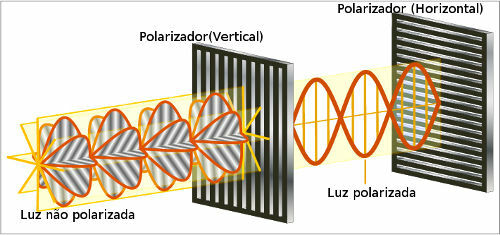Polarization is a property of electromagnetic waves, in which they are selected and divided according to their vibration orientation.
This phenomenon in physics occurs after waves pass through a device whose main function is to filter the direction in which they vibrate. This device selects one of the directions in which the wave vibrates and prevents it from passing through the other directions. This device is called a polarizer.
Wave polarization
The phenomenon of polarization of electromagnetic waves is exclusive for transverse waves, as this type of wave has its propagation perpendicular to the vibration.
At light waves are an example of transverse waves that undergo polarization. The waves produced by television and radio are polarized waves, as both have an electric field that varies with space and time in a given direction.
If needed, a second polarizer can be used to confirm the polarization of the first. It is placed so that it polarizes the wave in a direction perpendicular to the first polarizer. The wave is then prevented from propagating and the polarizers assume the characteristic of being crossed. The image below shows a schematic of the
light polarization:
Longitudinal waves have their propagation direction parallel to the vibration direction and, for this reason, they cannot be polarized. Sound is an example of a longitudinal wave that cannot be polarized.
Political polarization
Polarization can still be characterized as an action performed with the intention of focus attention or activity on two opposite extremes.
This action takes place in the existence of groups that have interests or activities already aligned with each other.
In the political sphere, for example, it refers to the divergence of attitudes or ideological positions, which can be public or be within certain groups.



